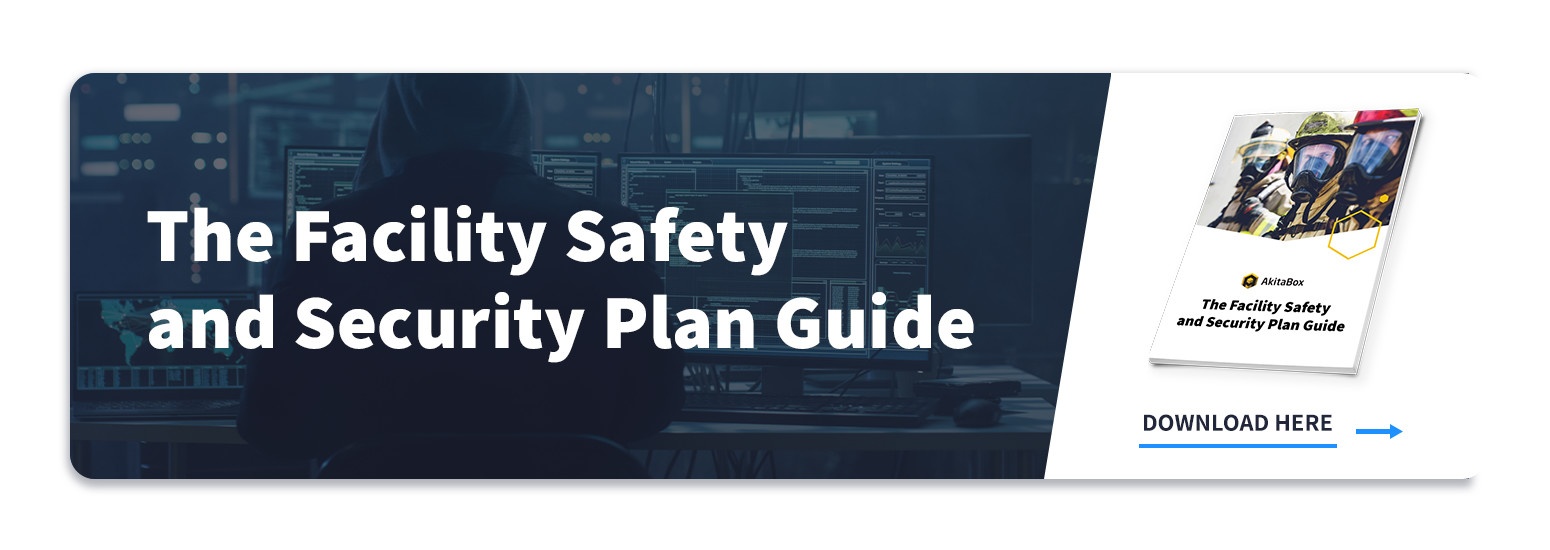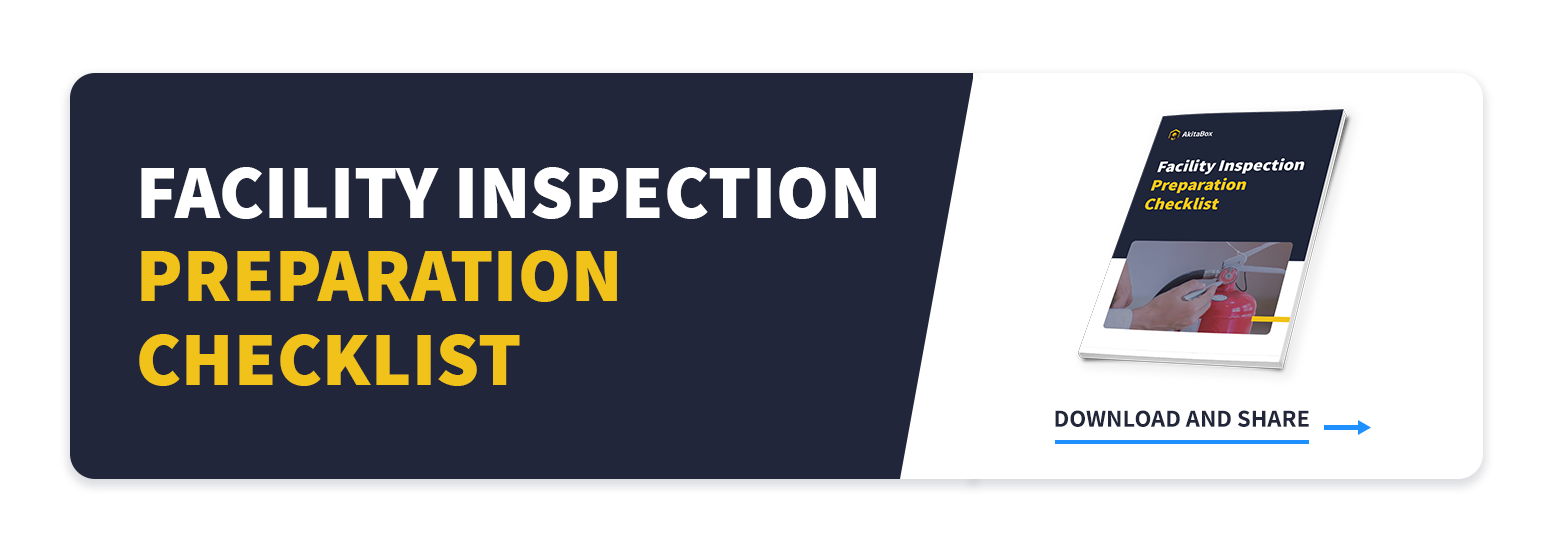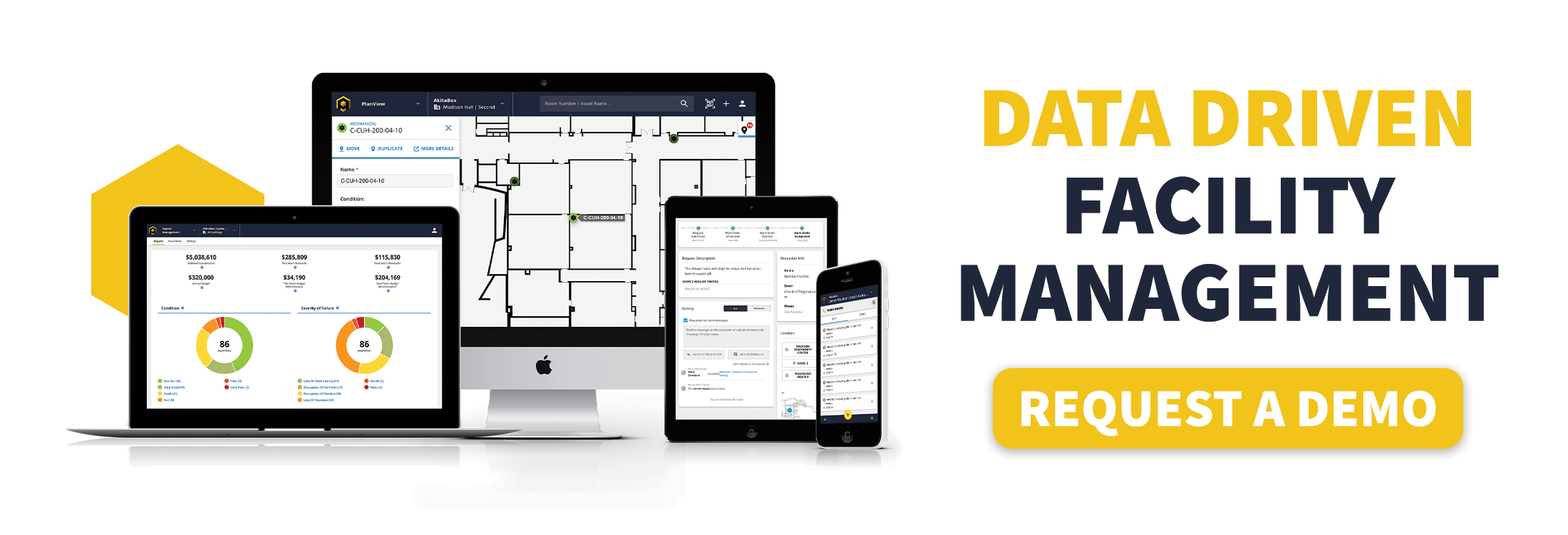Building Audits and Inspection Reporting: How to Maintain Compliance
It’s time for a facility inspection.
If your first reaction is anxiety or fear, you’re not alone. After all, inspectors will point out all the areas of your building that need improvement, many of which could be urgent. You may be worried about procuring the resources to fix issues and getting those tasks completed in a timely manner. Your organization is under the microscope, and the stakes are high.
But the truth is that inspections are critical to facility safety, accessibility and compliance. In fact, inspections can make or break your organization’s reputation, and in some cases, can even save lives.
This article explores the basics of inspections and why they’re a necessary part of running a successful business. You’ll also find helpful insight, action items and free tools to help ensure your organization is in a constant state of compliance.
Whether you’re a building manager or a C-level executive, you’re sure to find something useful here.
Table of Contents
Click any of the following links to jump straight to the topic you’re looking for.
- Building Inspection FAQs
- How to Pass a Building Inspection
- Facility Inspection Software
Inspections and Compliance 101: Your Questions, Answered
Facility inspections are simply part of doing business, and the best way to approach them is with foresight, knowledge and preparedness. Before we dive into Building Inspections 101, let’s look at the purpose and objective of facility inspections. Then, we’ll cover OSHA inspections and how to avoid violations and associated fines.
What is a building inspection and why does it matter?
A building inspection is a process that determines whether or not an organization is in compliance with specific laws and regulations. Equipment, machinery, physical infrastructure and maintenance processes are all examples of things within a building that require regular checkups to ensure safety and compliance.
The Purpose of a Building Inspection
As stated above, the objective of an inspection boils down to two things: safety and compliance. Safety is the driver of compliance (either to a regulation or a company policy). When a company is in compliance, employees are better able to do their jobs because they are operating in a safe working environment that doesn’t put their health and wellbeing at risk. Compliance benefits everyone – it’s just good business!
Did you know? The Occupational Safety and Health Administration (OSHA) states that businesses must provide a place of employment that is “free from recognizable hazards that are causing or likely to cause death or serious harm to employees” (OSH Act of 1970).
Inspections are designed to record hazards and document abatement. A compliant worksite will help prevent incidents, injuries and illnesses — which could protect your organization from legal action and employee lawsuits.
Who conducts a commercial building inspection?
Inspections of commercial buildings are typically conducted by either a certified inspector or a maintenance manager. Let’s take a look at the different functionalities of each.
- Building inspectors are employed by a city or county. Their job is to inspect new construction, additions, repairs or alterations under active building permits. A building inspector will also enforce rules, regulations and codes, including safety, electrical, plumbing, mechanical, energy and other building codes. Lastly, building inspectors must be certified (typically by the International Code Council). Inspectors ensure that nothing is faulty, dangerous or in violation of laws in your building.
- Maintenance managers take a more in-house approach to inspections. They conduct walk-throughs of their facilities to check that everything is working properly. If an asset is faulty or running inefficiently, the maintenance manager will create a work order to have his or her team fix the issue. It is up to the maintenance manager to provide appropriate documentation (typically within a compliance software) to show inspectors that regular maintenance has been conducted on machinery.
How can my organization benefit from conducting inspections?
Inspections ensure safety and compliance with codes, but they also illuminate potential risks and hazards in your building. Additionally, inspections inform which repairs and replacements should be prioritized when it comes to capital planning. Here are four ways that your organization will benefit from conducting regular in-house inspections:
- Inspections help identify existing (and potential) hazards in the building.
A physical safety audit, conducted by your maintenance team, will reveal anything within your building that poses risks to visitors, staff members and occupants of your building. Regularly scheduled visual inspections will help your facilities team determine how well (or not so well) current measures are working. - Inspections will help your safety team determine the underlying causes of safety risks.
Facility directors and their teams take safety and security within their buildings very seriously. Maintenance teams can utilize frequent inspections to identify risks and take steps to mitigate them before an inspector even arrives.
- Inspections reveal corrective actions required to remedy compliance issues.
Corrective action may involve adjusting company policies, reviewing safety procedures, wearing additional personal protective equipment or speaking with employees to understand their safety concerns. Inspections will help your organization gain insight into everyday operations and how they can be adjusted to promote safety. - Inspections will help you monitor your progress toward risk control and abatement.
Inspection reports will prove the progress you’ve made as an organization and demonstrate that actions have been taken to remedy any red flags revealed during an inspection. Consistent evaluation will lead to increased progress toward safety and compliance.
What is the purpose of OSHA?
The “Occupational Safety and Health Administration” (OSHA) is a division of the U.S. Department of Labor that ensures safe and healthful working conditions for American workers. OSHA’s goal is to enforce safety standards, provide training and outreach, and prevent work-related injuries and death in the workplace.
Today, OSHA has jurisdiction over more than 7 million worksites. Most employers fall under OSHA’s administration (at a state level and/or federal level), so it’s important to understand how OSHA compliance works and how your organization could be subject to OSHA violations and fines.
What is an OSHA inspection? What should I expect?
Every establishment covered by the OSHA Act of 1970 is subject to inspection by OSHA Compliance Safety and Health Officers. These trained professionals ensure compliance with OSHA requirements while helping employers and employees reduce on-the-job hazards and prevent injuries, illnesses and deaths in the workplace.
- Inspections can be announced or unannounced.
- Inspections may serve to investigate imminent danger situations, severe injuries or illnesses, employee complaints or referrals from federal or state agencies.
Why do OSHA violations, fines and penalties matter?
OSHA violations, fines and penalties are no joke, and could cost your organization significant money if dangerous situations are not fixed within the allotted time frame. To illustrate, the following table lists the maximum OSHA penalty amounts for various violation types (adjusted for inflation as of 2019).
| Type of Violation | Penalty |
| Serious Other-Than-Serious Posting Requirements |
$13,260 per violation |
| Failure to Abate (meaning to lessen, reduce or remove a potential hazard) | $13,260 per day beyond the abatement date |
| Willful or Repeated | $132,598 per violation |
According to OSHA, employers who have been cited can take either of the following courses of action:
- Agree to the citation: The condition must be corrected by the date set in the citation and the penalty paid, if one is proposed. Abatement verification may require photographic or video evidence, a sales receipt, a safety report, manufacturer documentation, a record of completed training or other evidence of abatement.
- Contest the citation: The employer has 15 working days to request a conference with an OSHA area director or formally contest the citation (or abatement date) in writing to the area director.
To read a more in-depth explanation of OSHA inspections and violations, visit https://www.osha.gov/.
Check out OSHA Training Courses and OSHA Assistance Programs
OSHA’s mission is to protect your employees from harm and prevent unnecessary injuries in the workplace. To ensure your success, OSHA offers a variety of options for employers who seek compliance assistance. Here are three resources for you to check out.
- Book an On-site Consultation Program: This program provides professional, high-quality, individualized assistance to small businesses at no cost. Click here for more information.
- Utilize OSHA’s Educational Resources: OSHA offers a variety of downloadable resources to help your business maintain workplace safety, hazard awareness and compliance. Check out their education resources, grants and training opportunities here.
- Contact a Compliance Assistance Specialist: OSHA’s 85 offices across the nation provide robust outreach and education programs for employers and workers. Contact the regional or area office nearest you.
How to Ace Inspections and Maintain Compliance in Your Buildings
Inspections are a reality for businesses. The best way to approach them is with preparedness and positivity. Unfortunately, organizations can (and most likely will) have a compliance issue at some point or another. Areas that fail inspection are unsafe for everyone within your building, not just for employees, so it’s important to resolve issues quickly and take a proactive approach to your compliance going forward.
Reduce risk and improve inspection results with the following strategies, designed to help your maintenance team pass your next commercial building inspection.
4 Strategies for Passing a Commercial Building Inspection
1. Improve efficiency of inspection routines with the PDCA Cycle.
The “Deming Cycle” (also known as the PDCA Cycle) is a quality improvement model that promotes continuous improvement in the workplace. This four-step model can be applied to a variety of situations, including facility inspection routines. Let’s take a closer look at how leadership teams can utilize the cycle to improve the ease of inspections.
| Deming Cycle Steps | Explanation |
| “Plan”
Define the purpose of the initiative and set expectations. |
The purpose of conducting inspections is to promote safety and prevent injuries. Facilities teams are expected to record and document observations and improvements made for greater transparency. |
| “Do”
Define a strategy, collect observations and perform initial corrections. |
Develop a comprehensive inspection strategy. Protocols should define who does the inspection, when it will occur, what is to be observed and where inspection data should be recorded (preferably in an inspections software application). |
| “Check”
Periodically review data collected and identify any gaps or trends. |
Once inspections have been completed and data has been collected, your maintenance team can review findings. Data reviews are critical, as they reveal gaps and can help teams identify what actions can be taken to drive improvement. |
| “Act”
Give feedback, develop action plans, and make data-driven decisions. |
Brainstorm ways that the inspections process can be simplified and made more reliable. This could involve providing additional feedback, sharing observed trends, enacting process improvements or thinking of new ways to utilize data collected within your building inspections software. |
The Deming Cycle is a model that aims to solve problems and implement solutions in a rigorous, methodical way. Use this framework to help your maintenance team explore a range of solutions to problems and pilot them in a controlled way before selecting one for implementation. Continuous improvements will benefit your safety program and help your organization reach its company-wide initiatives.
2. Utilize this safety inspection checklist to reduce risks and hazards.
Performed by a safety officer, a safety inspection (or audit) assesses risks and hazards in the workplace. It also evaluates the reliability of health and safety systems. Your executive leadership team can utilize the results of this process to prevent work-related incidents, injuries and fatalities, and ensure that your organization complies with safety requirements.
During the Audit: A safety officer will inspect the worksite and examine dangerous activities, processes or areas. The officer will look for hazards which may result in an accident, ill health or death. Here are three categories he or she will look for.
- Unsafe conditions (i.e. tripping hazards, wet surfaces, lack of ventilation, etc.)
- Unsafe equipment (i.e. damaged ladders, defective wiring, frayed cords, etc.)
- Unsafe acts (i.e. improper use of protective equipment, failing to follow safety rules, etc.)
After the Audit: Findings will be recorded and discussed with the organization. For a more extensive list of facility risks and hazards that a safety officer will look for, download the Facilities Hazard Identification Checklist.
All facilities face potential risks which, left unchecked, can put workers, occupants and the entire organization in jeopardy. Utilize the expertise of a safety officer to point out areas of improvement within your workplace, or conduct your own risk assessment.
- Download a Free Workplace Safety Inspection Checklist: Your maintenance team and safety committees can utilize this workplace safety checklist as a go-to guide for learning how to perform a complete audit of a job site. You’ll learn risks and hazards to look for, which can help prevent accidents and ensure compliance with OSHA’s safety standards.
3. Create a reliable building inspection checklist (or download ours).
Having a proper building inspection process in place is integral to a safe, functional and code-compliant work environment. Inspections not only reveal regular wear-and-tear on equipment, but also alert your team to dangerous equipment malfunctions that could result in injury or even death.
While equipment and machinery should be maintained for proper functionality throughout the year, it’s still important to put an actual inspections process in place to ensure compliance with organizational safety protocols and OSHA standards.
Here’s a list of best practices to follow when putting an inspection process in place at your organization.
- Utilize a building inspection checklist to know what to look for when conducting an inspection.
- Elect an employee to complete an inspection by a specific date and time.
- Elect a different employee to check that the action has been taken care of by the agreed time.
- Record all inspection results in a facility inspections software to produce an audit trail.
- If an inspection fails, elect an employee to remedy the issue and provide a hard deadline of when the task should be completed.
- Provide consistent training sessions during the year for all members of your inspections team.
4. Aggregate critical information for inspectors in a specialized software.
In today’s technology-driven world, it is not uncommon for inspectors to accept (or even prefer) using an organization’s inspection software to prove compliance.
An inspection software can eliminate bulky binders of asset maintenance history, and is much faster and more convenient for inspectors to use than traditional organization methods. Your building inspector will enjoy the convenience of having this information right at their fingertips.
Software like AkitaBox offers a cutting edge, yet easy-to-use software interface that makes completing inspections manageable for any industry. Use the inspections module to:
- Eliminate the hassle of paper-based organization methods
- Automatically track inspection histories by asset type
- Track history of preventive maintenance measures
- Run and present analytics on inspection data
- Prove compliance to inspectors by providing e-copies of documentation
Your maintenance team will be empowered to instantly create inspection-related work orders and close them out once procedures have been concluded. If your organization has been on the fence about purchasing an inspection software to help track your compliance, make this year the year that you commit.

With proper planning and preparation, there’s no need to fear inspections. Inspections should be viewed as an opportunity to grow and learn. Executive leadership teams, in conjunction with facilities teams, can gain constructive, third-party insight on how to improve operations in the future. Inspections are also a great way to showcase everything your organization is doing well.
Make sure your maintenance team has the right tools to expedite (and ace) inspections in your building by leveraging a data platform like AkitaBox.
AkitaBox: The Inspections and Compliance Software Your Business Needs
AkitaBox is the industry’s leading software for collecting and analyzing data about your building infrastructure. Ensure compliance with ease by automatically generating and assigning inspection tasks. Get a real-time view of inspection progress and easily monitor ongoing work across all of your buildings. Drill into associated work orders within failed inspections, and gain a better understanding of your overall compliance posture.
As a single source of truth, AkitaBox allows users to pull reports across all buildings to share with the Joint Commission, OSHA or other accrediting agencies at a moment’s notice.
If you’re looking to learn more ways to simplify the inspections process in your organization, schedule time to speak with a facility management innovator at AkitaBox. Our industry experts are here to answer your questions and provide you with the tools you need to ace inspections and prove compliance.
Thanks for reading! We look forward to hearing from you.






